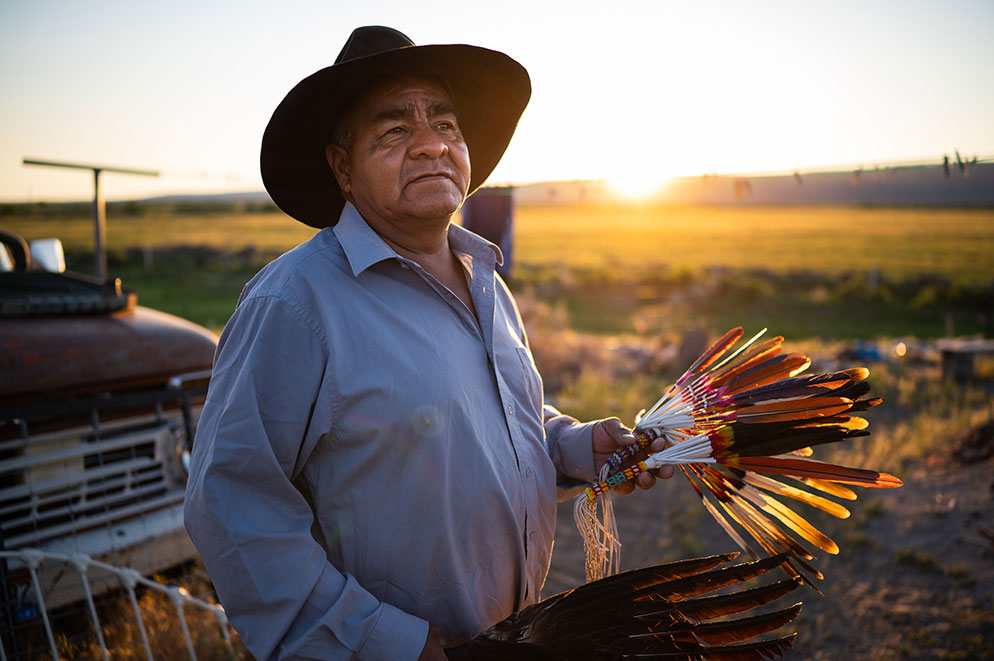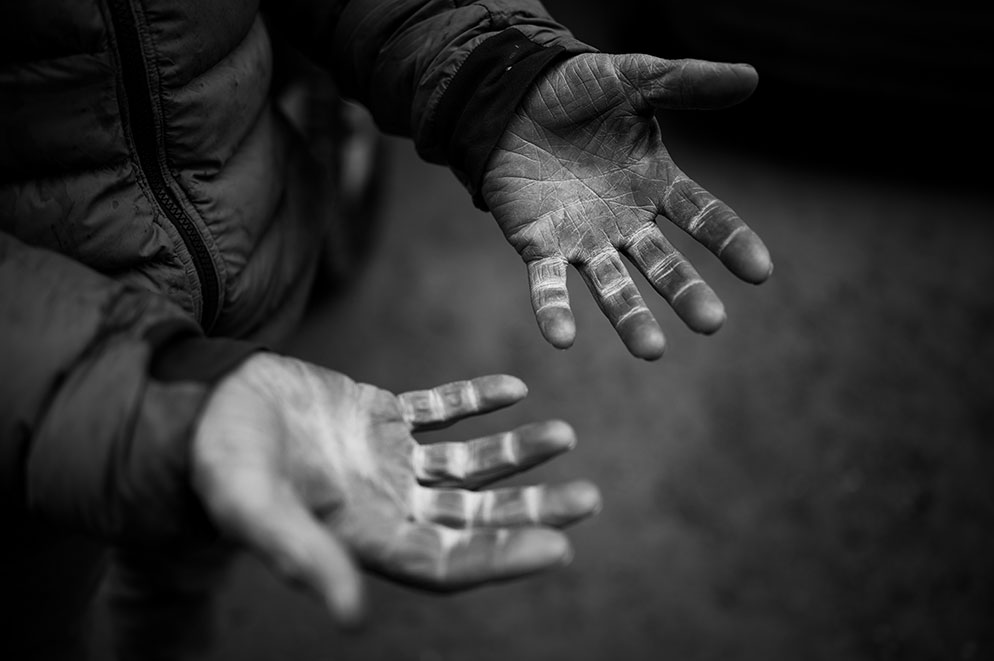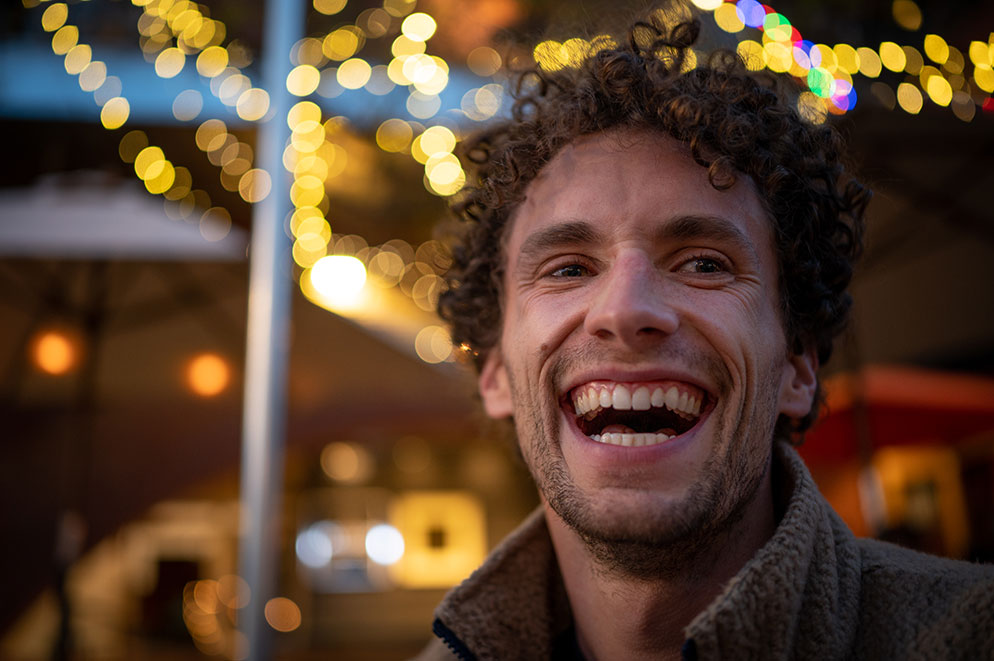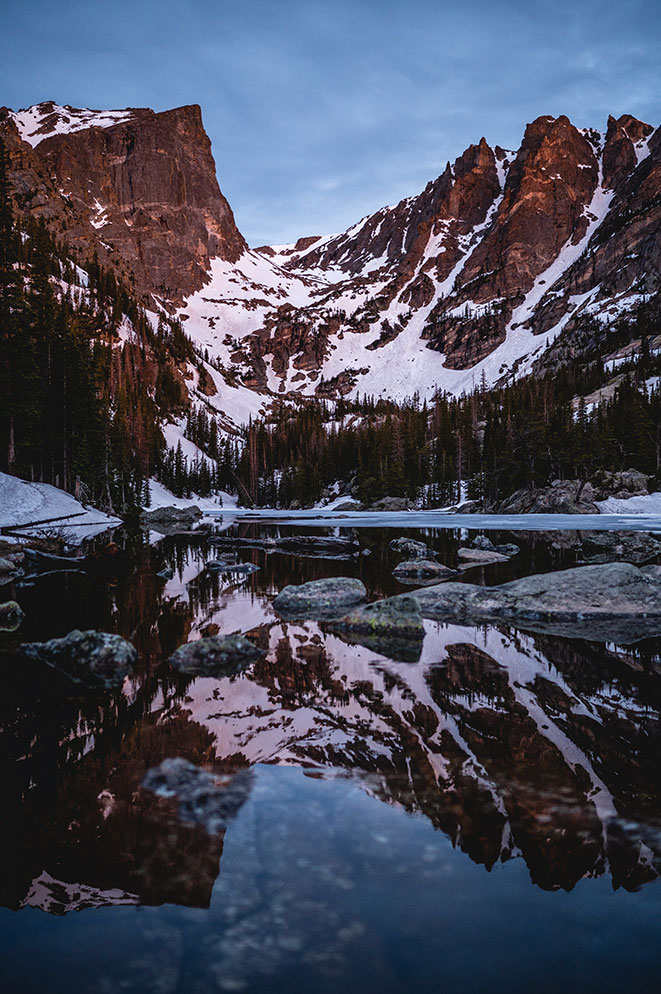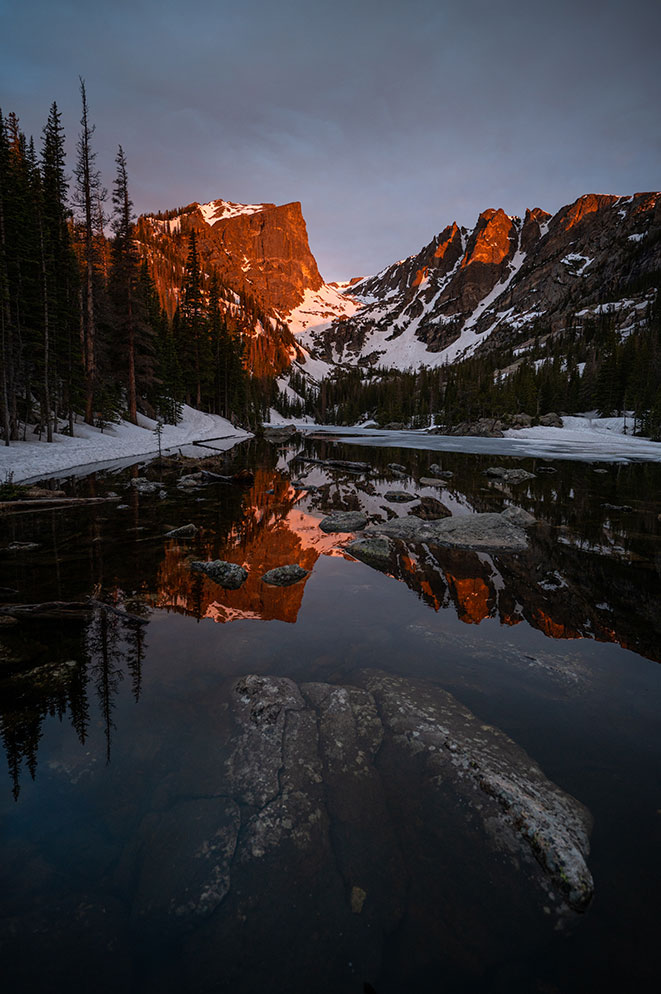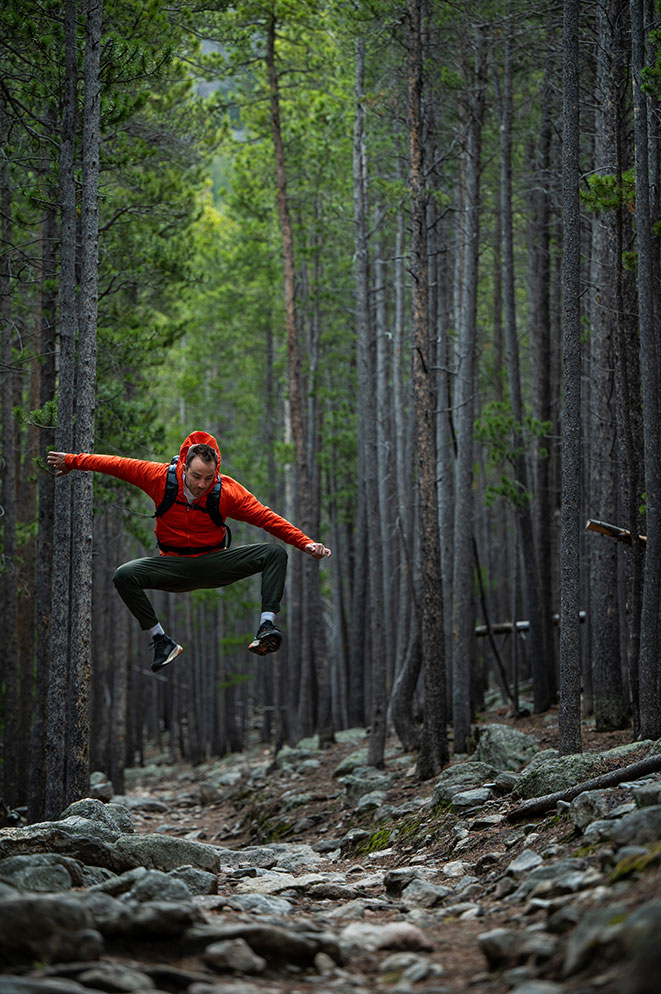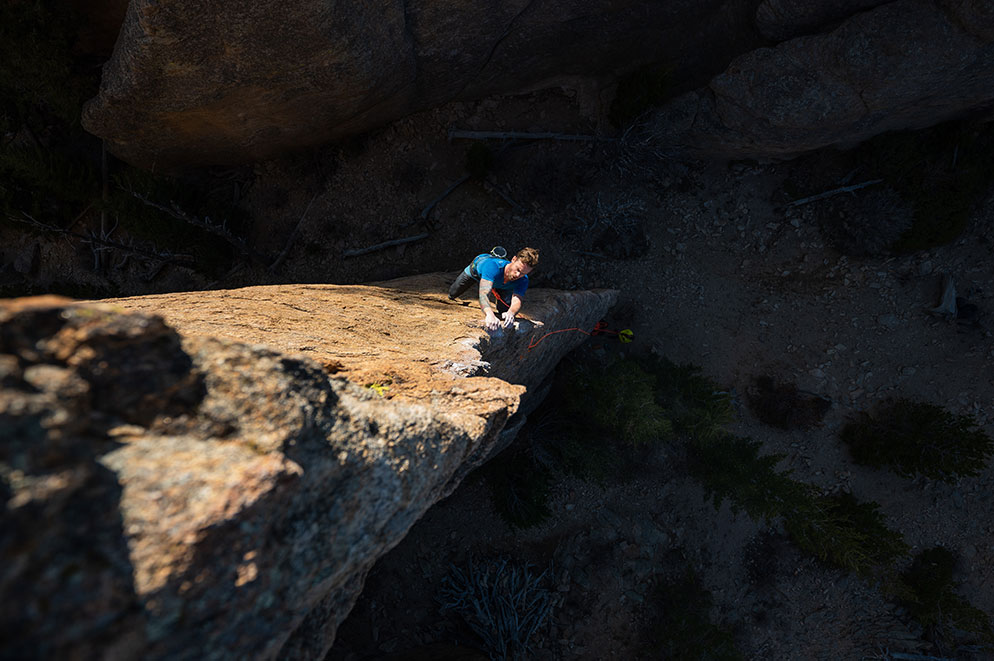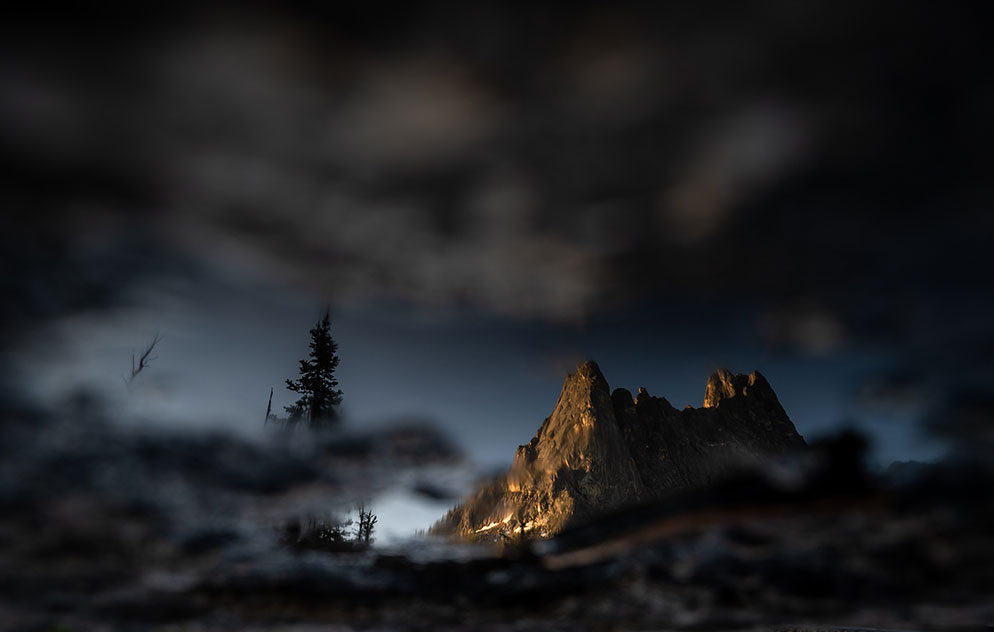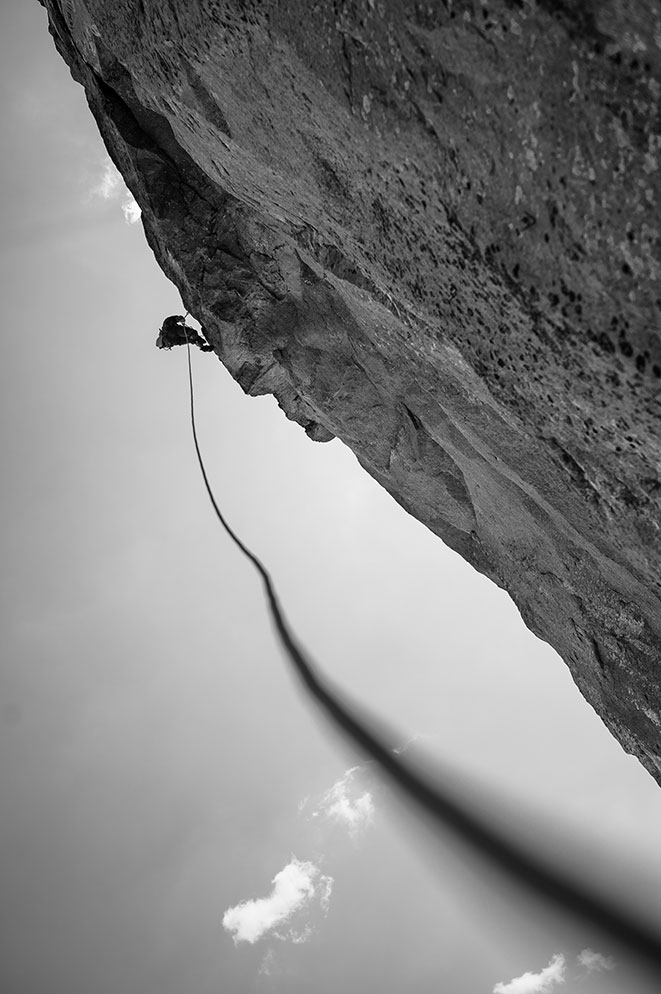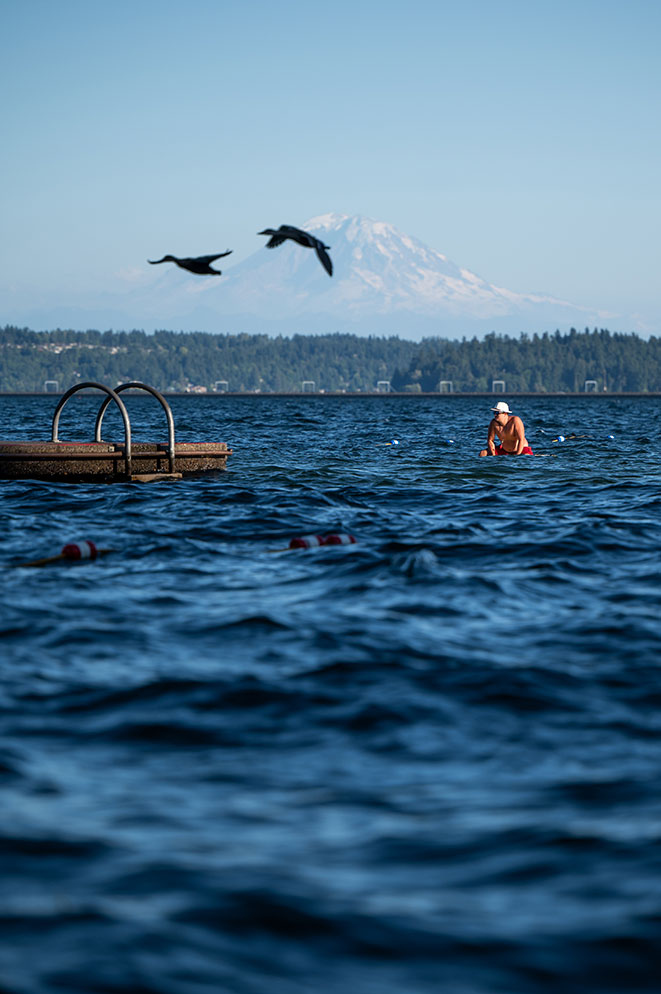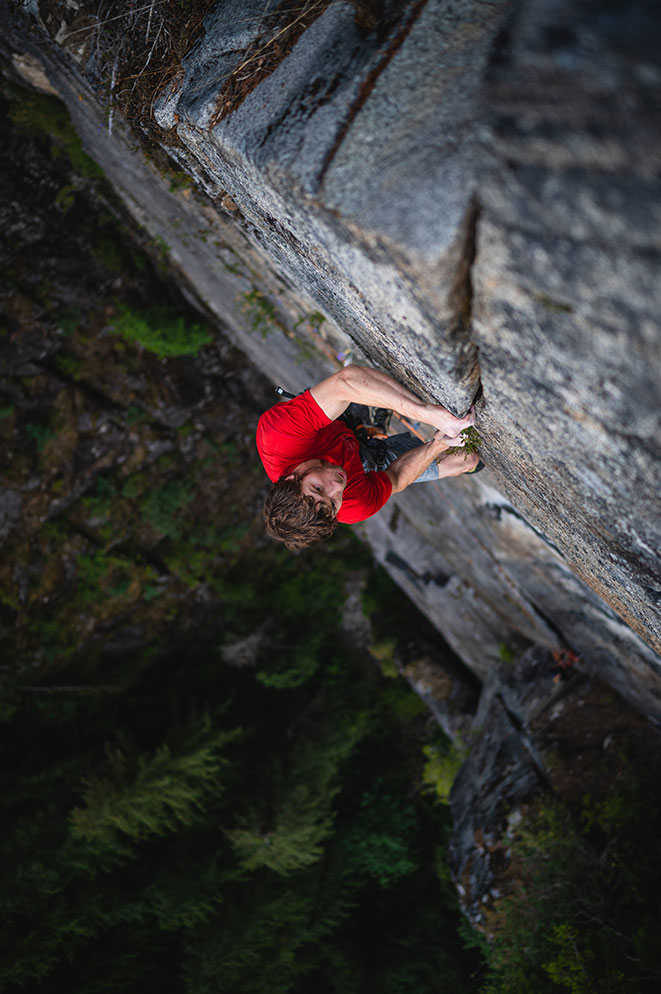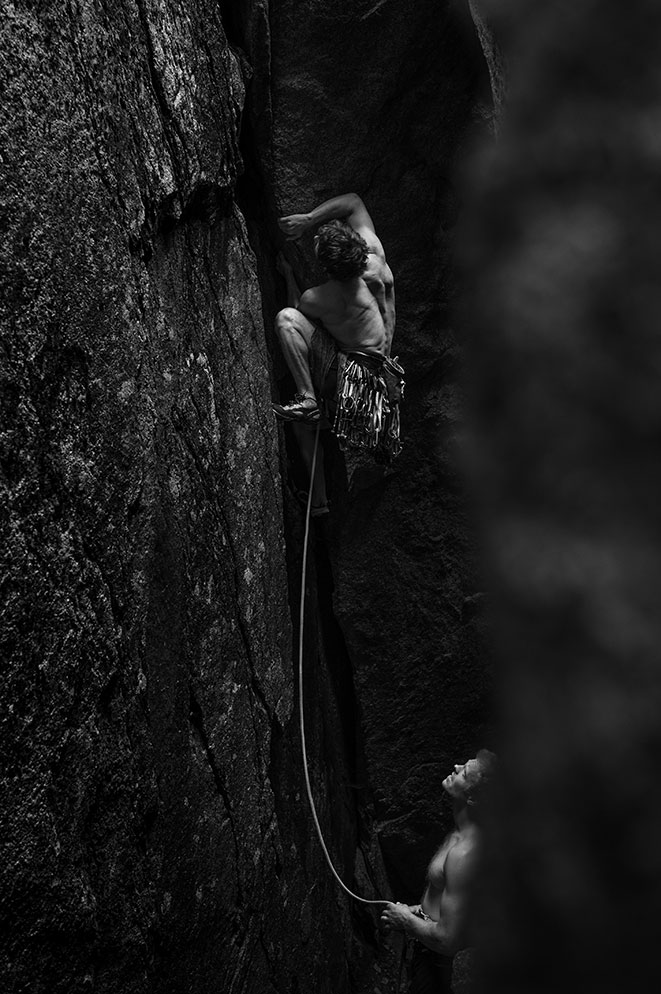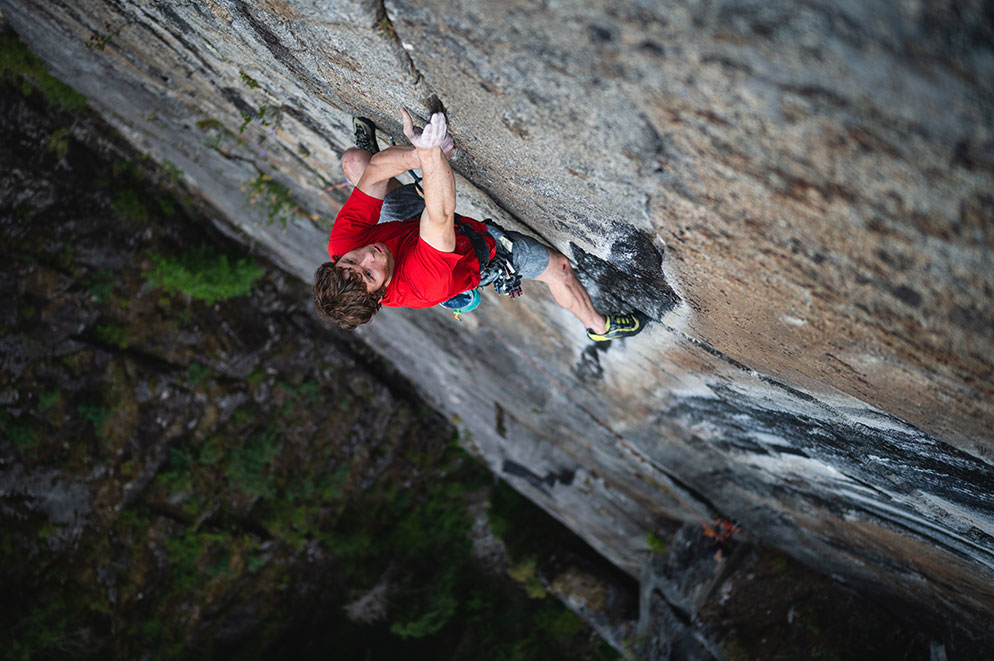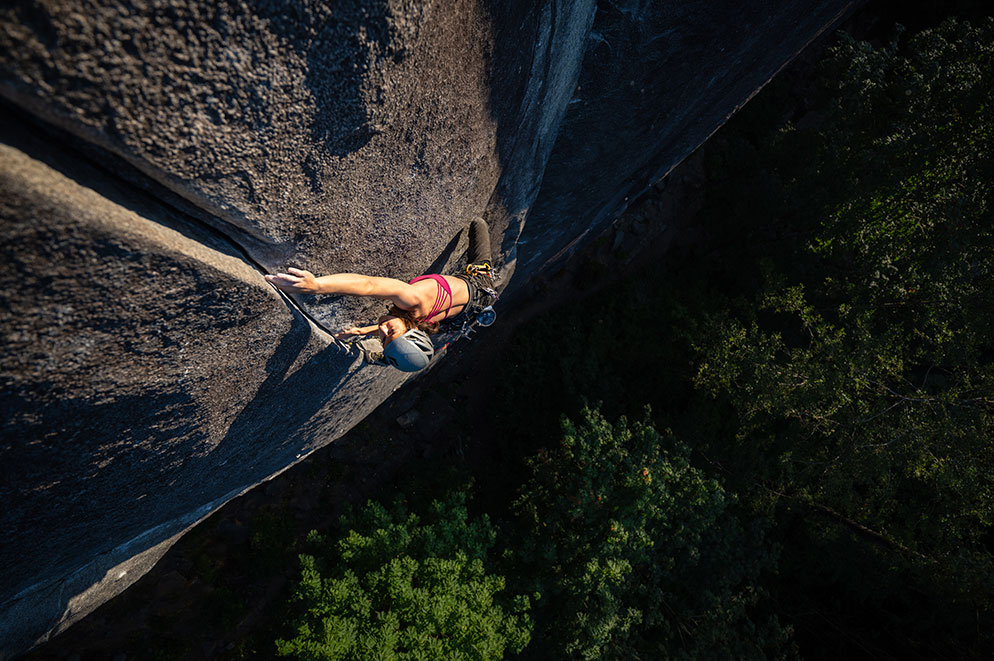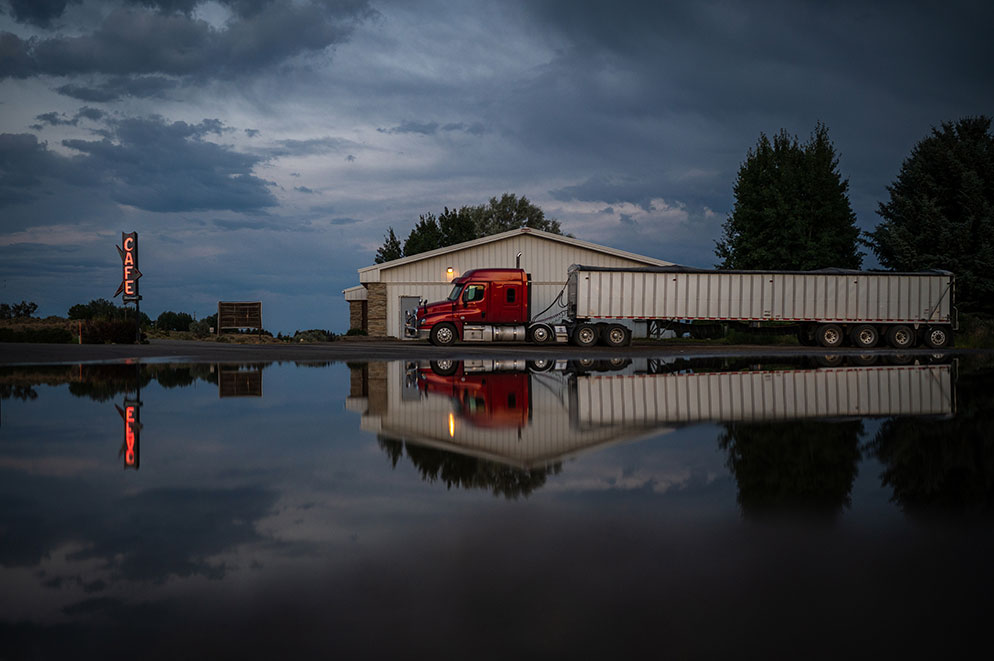Curious About the Z System? Here’s Why “You Really Oughta Try It”
A climber’s hands. It seems some climbing ropes turn black from dirt and contact with aluminum carabiners, and they leave their mark. The white areas are magnesium climbing chalk. Z 6II, NIKKOR Z 35mm f/1.8 S, 1/500 second, f/1.8, ISO 200, manual exposure, Matrix metering.
Let’s say that the first Tara Kerzhner photo you see when you come to this story is the hands picture. Knowing little or nothing about her as a photographer, you would still know this: details are important in any photo story she chooses to tell; and somewhere along the line, she’d formed a liking for black & white photography.
Tara’s grab shot of a fellow climber in downtown Boulder, Colorado. “This was on one of the first nights I took the Z camera out for a spin,” Tara says. “It’s kind of a test shot for handling light and wide-open bokeh.” Z 6II, NIKKOR Z 35mm f/1.8 S, 1/50 second, f/1.8, ISO 500, manual exposure, Matrix metering.
What you couldn’t tell looking at that photo, or any of the photographs here, is that recently Tara began photographing with the Nikon Z system, and it’s what she saw when she began shooting with a Z 6II that prompted us to tell you this story.
Dream Lake and Hallett Peak in Rocky Mountain National Park, Colorado. “I took this and thought, Wow, what a beautiful reflection. Then the sunlight broke through behind me…” Z 6II, NIKKOR Z 35mm f/1.8 S, 1/30 second, f/1.8, ISO 1000, manual exposure, Matrix metering.
“…and I got one of the best sunrises I’d ever seen in the park.” Z 6II, NIKKOR Z 14-24mm f/2.8 S, 1/200 second, f/2.8, ISO 400, manual exposure, Matrix metering.
Tryout Time
It starts with a couple of friends—fellow pro photographers and Z-system shooters—whose “you really oughta try it” suggestions coincided with Tara’s interest in finding out how Nikon’s mirrorless system performed. Not that she was dissatisfied with her current system, but…well, maybe this was one of those times that the grass actually was greener on the other side of the camera-brand fence.
What she saw in her first photos with the Z 6II was the incredible sharpness of the images compared to the system she’d been using. “That was the knockout,” she says. Which is interesting, because in Tara’s judgment the initial lure of any Nikon system is the legendary reputation of NIKKOR lenses. “I think that what sets my style more than anything is the sharpness of prime lenses,” she says, “and that was what I recognized right away. There was a sharpness I was getting from the camera and the lenses that I’d never seen before. There was a difference I could see in the images."
Idaho Tourism hired Tara and other native-American photographers to document six artists from three of the state’s five tribes. “Reggie is a man of many talents,” she says, “and one of them is making fans that native people in Idaho use as part of their regalia. It’s a traditional art form, part of the culture, and he teaches it to younger generations to keep it alive.” Z 6II, NIKKOR Z 35mm f/1.8 S, 1/500 second, f/1.8, ISO 100, manual exposure, Matrix metering.
She’d photographed with two primes—the NIKKOR Z 35mm f/1.8 S and NIKKOR Z 85mm f/1.8 S—and two zooms—the NIKKOR Z 14-24mm f/2.8 S and NIKKOR Z 70-200mm f/2.8 VR S.
She’d also heard from her friends about the Z 6 II’s dynamic range—the ability, in the real-world situations a pro shooter faces, to accurately capture dark-to-light tones in a scene. Obviously, the greater the range, the better, and for Tara it was a key consideration. To appreciate why, we have to take you back to the beginning.
A puddle reflection of Liberty Bell Mountain in the North Cascades in Washington state. “Liberty Bell is the premier climbing wall of Washington Pass,” Tara says. “I took this at sunset on the day the Cedar Creek fire started. Everything you see clearly is reflection; the rest is blur from the shallow depth-of-field.” Z 6II, NIKKOR Z 14-24mm f/2.8 S, 1/640 second, f/2.8, ISO 250, manual exposure, Matrix metering.
“After the Liberty Bell shot, I turned in the other direction and saw the sun peek through. The light is so red because of the fire—you can see the smoke at the top of the range.” Z 6II, NIKKOR Z 70-200mm f/2.8 VR S, 1/400 second, f/2.8, ISO 250, manual exposure, Matrix metering.
There was a sharpness I was getting from the camera and the lenses that I’d never seen before.
“We were taking our ropes down on Liberty Bell and were about to leave because of the fire. That’s my husband, Greg, up there, rappelling. Shooting it in black and white seemed right for the moment.” Z 6II, NIKKOR Z 35mm f/1.8 S, 1/1600, f/3.5, ISO 125, manual exposure, Matrix metering.
A lifeguard on a paddleboard at Madrona Beach, Seattle, Washington. “I thought it was a really pretty scene, with Mount Rainier in the background,” Tara says. “This is one of those ‘bring my camera everywhere’ shots that happen when I bring my camera everywhere. In between the climbing photos I have photos like this.” Z 6II, NIKKOR Z 70-200mm f/2.8 VR S, 1/2000 second, f/2.8, ISO 100, manual exposure, Matrix metering.
Setting the Style
“I started taking photos when I was pretty young, with my mom’s film camera, so I learned on film,” Tara says. “I took darkroom classes in high school in the last years they were even offered. Black and white photography—I really fell in love with it, and the important takeaway for my style now is that I tend toward high-contrast scenes and dramatic light.” How well the Z 6II performed in those scenes and situations was major convincer that it was time to make a change.
In addition to sharpness and dynamic range, there was also the camera’s capture of color. “One of my friends had talked so much about the brilliance of the color in the images,” Tara says, “and that was a cool thing to see.”
What has also stayed with Tara from the early days of her photography is “the darkroom advantage of seeing and controlling the results,” which in digital photography directly translates to “what you like your gear to be able to get, right from the start. Then you work with the same concepts, but with digital they’re even more controlled.
Equally important, regardless of whether the image is color or black and white, is the detailed telling of the story. “I think my strength as a photographer is to take those really rad climbing photos—someone hanging of a cliff, that really dramatic shot. I know I’m good at that, but I’m always challenging myself to have my camera with me all the time so I can capture those in-between moments, those details of the story.”
“Alana’s project is to make this [Index] climb without falling—here she’s on the most difficult part. She’s been falling there, but eventually she’ll do it. You need to climb from the base of the route to the top without falling; if you fall in the middle, and you still make it to the anchor, you haven’t done the route. You have to make it from the bottom to the top without falling.” Z 6II, NIKKOR Z 14-24mm f/2.8 S, 1/500 second, f/2.8, ISO 100, manual exposure, Matrix metering.
Her story-telling strength begins with her experience as a climber: she knows what comes next, what to anticipate; and she knows the picture she wants to get. It won’t surprise you that it’s a picture with a difference, and that she often challenges herself to find a new route to the photograph. “I feel very comfortable taking climbing photos—I’ve been climbing for probably 15 years,” she says, “so taking an action, climbing photo, high off the ground, is my comfort zone.” The idea then is to use the light, the perspective, the position to make the photograph something special.
“It was just after sunset, and I’d gotten out of the car to get gas at a station across the way and saw this. The light was right, the reflection was right and I ran back to the car to get my camera. I love this scene—it’s in Arco, Idaho, and I’d spent a lot of time in the town, and this photo says Arco to me.” Z 6II, NIKKOR Z 35mm f/1.8 S, 1/400 second, f/2.5, ISO 400, manual exposure, Matrix metering.
Changing the tools for that job meant “a little bit of a break-in period,” but “the basics, what I look for and the way I want my pictures to look, that doesn’t change. And it was all there: sharpness, clarity, detail, color.
“The gear is so advanced, and you can do so much more, but the most important thing is to be able to do what you like, what you want to do, and what you are good at.”

